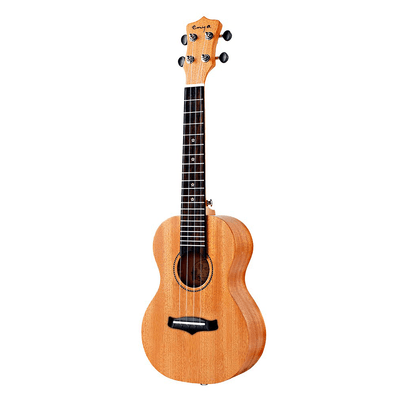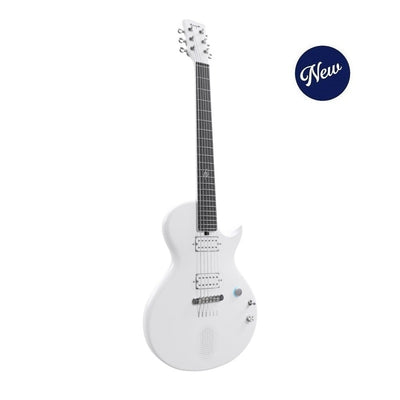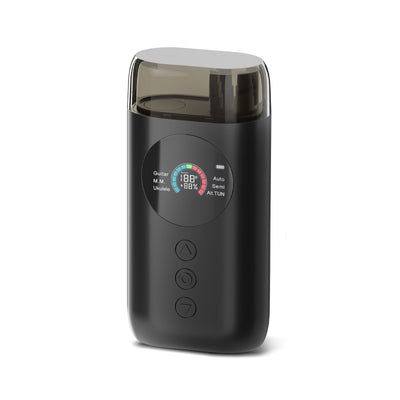Arranging Songs for the Ukulele chords

One of the most enjoyable parts of playing the ukulele is being able to cover your favorite songs. Its small size and relatively-straightforward playability make it a great instrument for “strum and sing”-style covers. Plus, thanks to the internet, we have access to an abundance of free chord sheets and other resources for learning songs. However, the songs that are available for you to learn are unfortunately somewhat limited — for the most part, your options are either popular hit songs or whatever random tabs and chords you might stumble across. What happens when there’s a song you want to learn but you can’t find a ukulele chord sheet for it? What if you find a chord sheet but you don’t like how the chords sound on the ukulele? Or what if you want to dive deeper into a song and learn how to play more than just the chords? In this two-part article, we’re going to learn how to arrange any song for the ukulele using a variety of resources. In part one, we’ll go over a few different techniques for learning the chords to a song, In part two, we’ll tackle how to arrange a song’s melody for the ukulele.
Keep in mind that when it comes to arranging songs, there is no one “correct” way to do it. Your arrangement method will also vary depending on what type of cover you want to play. You might be looking to learn the chords and do a vocal cover, or perhaps you want to arrange a fingerstyle instrumental cover that incorporates the song’s melody as well. The methods laid out in this article are simply what I’ve found to work in my experience of arranging instrumental covers. I hope that you find them helpful as you begin arranging songs, and that over time you are able to develop a process and a collection of resources that works for you. With all that in mind, let’s get started!
LEARNING THE CHORDS
An effective first step for arranging any song on the ukulele is to learn the chords, as it helps you better understand the song’s structure in addition to giving you a solid foundation to build your arrangement upon. In a lot of cases — especially for well-known songs — a ukulele chord sheet for a song can be found online, so a good first move would be to do a Google search for “[song title] by [artist] ukulele chords”. If anything comes up, try out the chords and see what you think. Unless the song you’re looking to cover was originally played on a ukulele, it’ll likely sound a bit different, as ukulele chord voicings are different than those of a guitar, for example. Oftentimes, this difference can sound quite nice as it offers a fresh “ukulele-style” take on the song, but other times it just sounds off, as if something is missing. If you decide that you don’t like how it sounds, move on to another option.
1. OKMUSICIAN APP
If you’re an Enya instrument owner, you have access to a free ukulele-learning app called OKMusician which can be another handy resource for learning chords and arranging songs, especially if you are new to the ukulele. In addition to having a full course of lessons that teach you how to play the ukulele from square one, the app also includes a library of tabs and chords for a bunch of well-known songs. If you don’t already have a song in mind that you want to learn, the app can be a super helpful resource to browse through and get some ideas. OKMusician makes learning the chords for each song in its library fun and comprehensive through a number of interactive features, such as animated 3-D tabs, background music with an adjustable tempo, and clickable chord diagrams. All of these features make it a great all-in-one resource for learning songs, especially if you’re a beginner and don’t have a specific song in mind that you want to learn yet. If you’re an Enya instrument owner, it’s definitely a great resource to check out (and it’s free!). With that being said, you may still find that the search for your song’s chords continues on, in which case you should try out the next option.

2. LOOKING FOR THE CHORDS ON A DIFFERENT INSTRUMENT
Whether you were unable to find the ukulele chords for your song or you did find them but didn’t like how they sounded on the uke, the next option would be to look for the chords on a different instrument. If you can identify the main instrument being played in the song, do a Google search for the chords on that instrument. In my case, I arrange a lot of pop, folk, and rock songs that were originally performed on the guitar, so I will often look for the guitar chords or tabs and then adjust them so they can be played on the ukulele (we’ll go over how to do that next). A great resource for this is Ultimate-Guitar.com, which has user-submitted guitar tabs and chord sheets for just about every song you’ve ever heard of. It also has ukulele tabs and chords too, making it an excellent all-around resource for figuring out how to play any song.
Sticking with the guitar example, once you have a chord sheet or tabs for your song (if you were still unable to find anything, pick another song for now), the next step is translate it onto the ukulele. There’s two ways to do this — one is simple, the other takes a little more work. The simple way is to play the chords as they are written as if they were ukulele chords, meaning that if it says the chord progression on the guitar is A D F#m E, you play A D F#m E on the ukulele as if you were reading a ukulele chord sheet. From there, you can decide if you like how those chords sound or if you want to try the second method. If you happen to run into a chord that you don’t know how to play on the ukulele, there are plenty of great resources that you can use to quickly learn the chord. If you’re an Enya instrument owner, the OKMusician app has an incredible chord library tool that will generate a chord diagram for any chord that you select (the library includes just about every chord you could ever play on the ukulele). For each chord, the app provides you with not only the basic chord diagram, but also a diagram for every possible alternative fingering, as well as an adjustable 3-D animated view of a hand on a ukulele, which shows you the exact position your fingers should be in. If you’re not an Enya instrument owner, there are plenty of excellent online chord diagram generators that you can use instead. My personal favorite is UkeBuddy, which has a super clean interface and an easy to use chord diagram generator for nearly every chord you could ever play on the uke.
The second method involves translating the guitar chords or tabs onto the ukulele note by note rather than chord by chord. This does require more work and will often lead to some wacky fingerings or chord shapes that you’re not used to playing, but it will result in a ukulele arrangement that sounds closer to the original song. This method works best if you have guitar tabs for the song, since those show you all of the individual notes. If you are only able to find a chord sheet, I would stick with the simpler option for now. Basically, you’re going to go through the guitar tab note by note and figure out how to play each one on the ukulele. I find it helpful to write out my own ukulele tab as I am doing this. To figure out the notes, you essentially need to take the open string note and fret number you see on the tab (for example, D string, 10th fret) and count up that many frets from that note on the ukulele. So, using that example, you’d find the note D on the ukulele (C string, 2nd fret) and count up 10 frets, which would put you at the 12th fret on the C string. You’d write a “12” on the C string line on your ukulele tab, and then move on to the next note. This process is going to feel incredibly painstaking and tedious at first, but it’ll get easier the more you do it and are able to identify patterns in the notes.

HERE ARE A COUPLE HANDY TIPS THAT WILL HELP SAVE YOU SOME TIME AND SPEED UP THE PROCESS:
1. Anything at fret 12 on the guitar tab is an octave above the open string note (meaning that it’s the same note, only higher in pitch). This means that when you are counting frets, you can treat 12s on the guitar tab as 0s (and 13s as 1s, 14s as 2s, etc). The same is true on a ukulele fretboard — 12 half-steps above a note will always result in that same note up an octave. A half-step is simply when you move one musical pitch away from a note, or one fret.
2. Looking only at its top four strings, a guitar with a capo at fret 5 is the same tuning as a ukulele (DGBE transposed up 5 half-steps becomes GCEA). This means that anything labeled fret 5 on a guitar tab (on those top four strings) translates to an open string on the ukulele. You can use this to speed up the counting process. For example, let’s say the guitar tab has an 8 on the B string. You know that fret 5 on the guitar’s B string translates to the open E string on a ukulele, so you would count up three more frets from there to get to 8 (instead of finding the note B and then counting up 8 frets), which would give you a 3 on the E string. This also means that those four strings are essentially in sync, meaning that if the guitar tab has a 7 on the D string and a 5 on the B string, you can make a note that the second note is 2 strings down and -2 frets away from the first note, and then apply that to the ukulele fretboard once you’ve translated the first note. Using both of those techniques, we can translate that example as such: D string, 7th fret on the guitar translates to G string, 2nd fret on the ukulele, and 2 strings down and -2 frets away from that would be an open E string, so those are your two notes. It might seem a little confusing when it’s written out like this, but it should make a lot more sense once you’ve had a chance to try it out on your ukulele and are able to visualize the fretboard.
When using this process of translating notes between a guitar tab and the ukulele fretboard, you’re inevitably going to run into some roadblocks along the way. You’ll run out of strings to play all the notes on, you won’t be able to play notes low enough or high enough to match the range of a guitar, etc. Unfortunately, this is the nature of trying to arrange something that was written for a 6-string instrument onto one with only four strings. However, by getting creative and keeping in mind that you’re making your own arrangement for the ukulele (and not trying to replicate the original exactly), you’ll be able to get around pretty much any roadblock that you run into.

HERE ARE A FEW TIPS TO HELP YOU OUT:
1. If you’re playing a chord, remove any notes that repeat themselves to free up a string on the ukulele. In other words, if you notice that in the guitar tab there are two different strings playing the same note, you only need to play it once on the ukulele. This will help if you find that the guitar tab is calling for a chord that uses more than four strings.
2. Be aware that the ukulele strings overlap in terms of the range of notes they can play and that the same note can be played on different strings. For example, fret 14 on the C string, fret 10 on the E string, and fret 5 on the A string all play the note D. Once you’ve done the initial translation from the guitar tab, keep in mind that moving notes around to different strings may help make parts easier to play by shortening the distance that your fingers need to move.
3. Low G tuning is extremely helpful when arranging songs since it expands the range of notes your ukulele can reach. If you find that a lot of the notes you translate from the guitar tab are below fret 0 on your ukulele’s C string (the lowest note you can play in standard high G tuning), I’d highly recommend giving low G tuning a shot.
4. If you find that the part you’re trying to play is too low or too high for the ukulele, you can always transpose the song to a different key that better suits the ukulele’s range. To do so, you can simply shift all the numbers in your tab up or down a certain amount. For example, if you do your translation from guitar tab to ukulele fretboard and find that a lot of the notes are being played high up on the fretboard where the body of the uke starts to get in the way of your fretting hand, you can shift everything down a few frets so that the song is more comfortable to play.
Through the process of learning the chords, you’ll gain a more solid understanding of the song’s structure — the order of the different sections, which sections repeat, how long each section is played for, etc. Knowing the structure of a song well is an important part of arranging a good cover. Where you go next from here depends on what type of cover you want to play. For vocal covers, you’ll move on to learning the lyrics and practicing them with the chords. For instrumental covers, the next step is to arrange the melody on the ukulele, which we’ll go over how to do in part two. Until then, happy ukeing!









